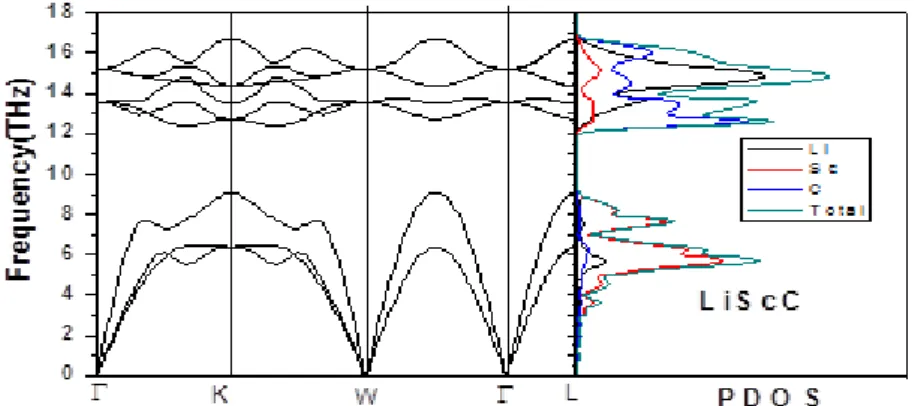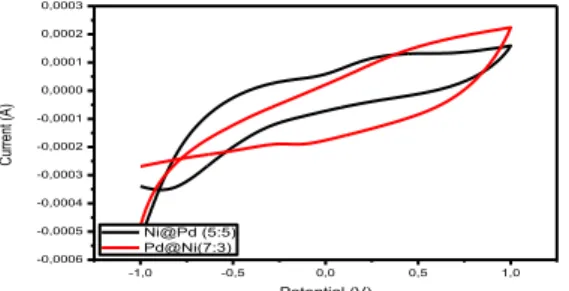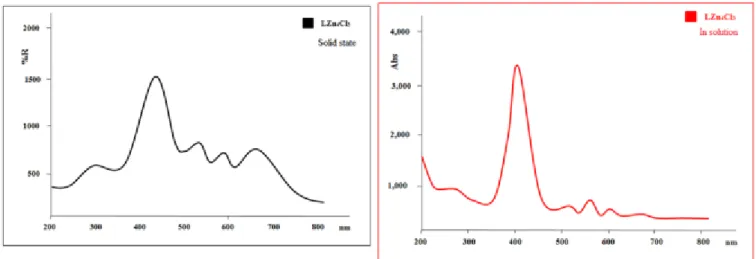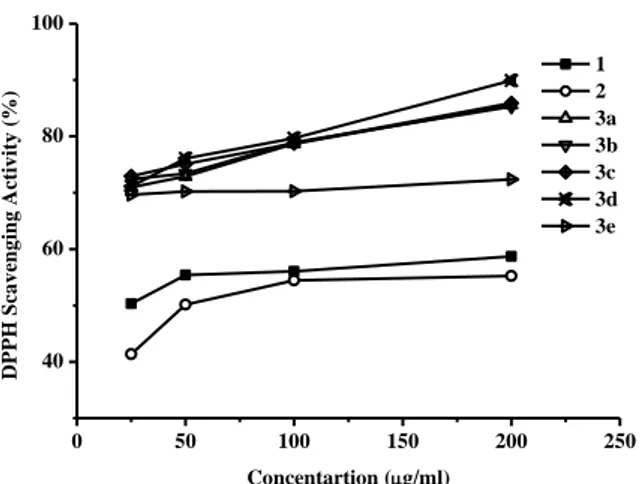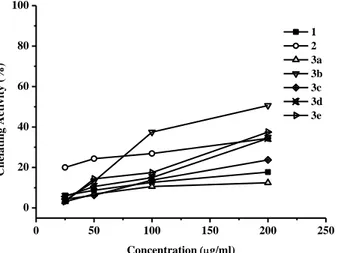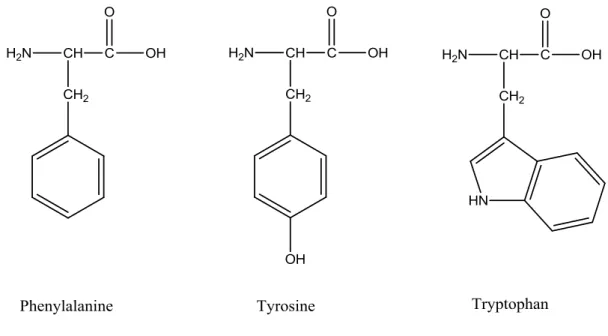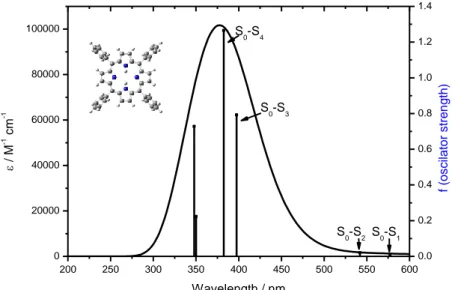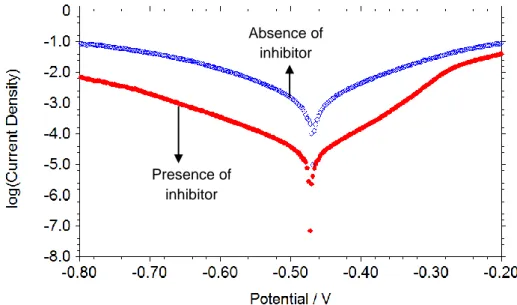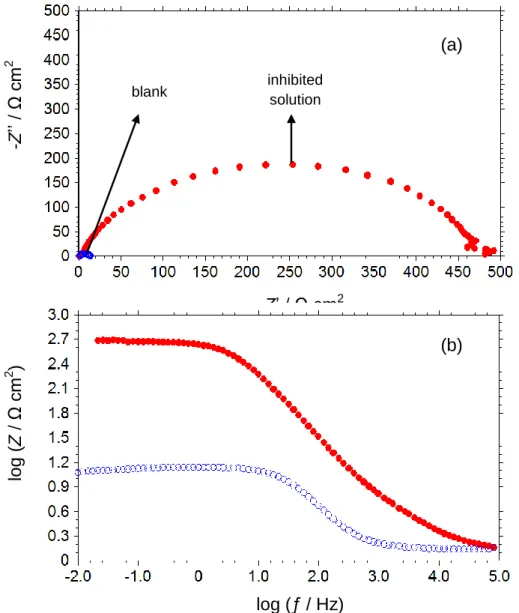CONGRESS BOOK
OEMT2016
2nd International Conference on
Organic Electronic Material Technologies
17-19 May 2016COMMITTEES
HONORARY PRESIDENTProf. Dr. Yücel ACER Çanakkale Onsekiz Mart University - Rector
CONFERENCE PRESIDENT
Osman DAYAN Çanakkale Onsekiz Mart University
Fahrettin YAKUPHANOĞLU Firat University
ORGANIZING COMMITTEE
İsmail TARHAN Çanakkale Onsekiz Mart University
İsmet KAYA Çanakkale Onsekiz Mart University
Vildan BİLGİN Çanakkale Onsekiz Mart University
Ali BİLİCİ Çanakkale Onsekiz Mart University
Mustafa KURT Çanakkale Onsekiz Mart University
Kıvanç SEL Çanakkale Onsekiz Mart University
Mehmet YILDIRIM Çanakkale Onsekiz Mart University
Ayhan ORAL Çanakkale Onsekiz Mart University
Fatih DOĞAN Çanakkale Onsekiz Mart University
Feyza KOLCU Çanakkale Onsekiz Mart University
Zafer SERBETCI Bingöl University
Dilek BAHÇECİ Çanakkale Onsekiz Mart University
Diğdem ERDENER Çanakkale Onsekiz Mart University
Elif KARACAN Çanakkale Onsekiz Mart University
Melek TERCAN Çanakkale Onsekiz Mart University
Serkan DAYAN Erciyes University
Kevser TEMİZKAN Çanakkale Onsekiz Mart University
Emrah SARICA Çanakkale Onsekiz Mart University
Uğur CENGİZ Çanakkale Onsekiz Mart University
Fatma AYDIN Çanakkale Onsekiz Mart University
Ergün GONCA Çanakkale Onsekiz Mart University
Ahmet ÇETİN Bingöl University
SCIENTIFIC COMMITTEE
Bekir ÇETİNKAYA Ege University
Nilgün KALAYCIOĞLU ÖZPOZAN Erciyes University
Mehmet SAÇAK Ankara University
Abdülmecit TÜRÜT Medeniyet University
Orhan ÖZDEMİR Yıldız Technical University
Tolga KAYA Central Michigan University
İdris AKYÜZ Eskişehir Osmangazi University
Grzegorz KARCZEWSKI Polish Academy of Sciences
Ahmed A. ALGHAMDI King Abdul-Aziz University
Attieh A. ALGHAMDI King Abdul-Aziz University
Denis NIKA Moldova State University
Yasemin ÇAĞLAR Anadolu University
B.Filiz ŞENKAL Istanbul Technical University
Mehmet KANDAZ Sakarya University
Saliha ILICAN Anadolu University
Ram K. GUPTA Pittsburg State University
Salem EL-FAIFY Khalid University
Hakan USTA Abdullah Gül University
Şemsettin ALTINDAL Gazi University
Ömer MERMER Ege Univeristy
Asmaa HENDI King Abdul-Aziz University
Khasan S. KARIMOV GIK. Institute
Muhammad H. SAYYAD GIK. Institute
Faten AL-HAZMI King Abdul-Aziz University
Savas SONMEZOGLU Karamanoglu Mehmetbey University
Luis BANARES Universidad Complutense de Madrid
Nadia ABDEL-AAL Suez Canal University
Luisa TORSI Universita Bari Aldo Moro
Nouredine SENGOUGA Université de Biskra
Christian WENGER IHP - Leibniz Institute
Fumihiko HIROSE Yamagata University
W.A. FAROOQ King Saud University
F. M. AMANULLAH King Saud University
Ekrem KALKAN Ataturk University
Tayyar GUNGOR Mehmet Akif Ersoy University
Sait Eren SAN Gebze Technical University
Serap GÜNEŞ Yıldız Technical University
Niyazi ÖZDEMİR Fırat University
Namık ÖZDEMİR Ondokuz Mayıs University
Mujdat ÇAĞLAR Anadolu University
Atif MUHAMMED King Saud University
Farid EL-TANTAWY Suez Canal University
Ahmad UMAR Najran University
Ibrahim S. YAHIA King Khalid University
Adem TATAROGLU Gazi University
Marco SCHIAVON Universidade Federal de Sao Joao del-Rei
Elias STATHATOS Tecnological-Educational Institute of Patras Giorgio SBERVEGLIERI C.N.R. - National Institute of Optics
Witold Daniel DOBROWOLSKI Polish Academicy of Sciences
Jingkun XU Technology Normal University
Abdel Salam Hamdy MAKHLOUF University of Texas Rio Grande Valley
Luisa TORSI University of Bari
Wojtek WLODARSKI RMIT University
José M. KENNY University of Perugia
Tülay BAL DEMİRCİ İstanbul University
Harun BAYRAKDAR Çanakkale Onsekiz Mart University
Ruhan BENLİKAYA Balıkesir University
Rafet KILINÇARSLAN Pamukkale University
Mehmet KARAKUŞ Pamukkale University
Emin KARAPINAR Pamukkale University
Welcome Massage
Organic Electronic Material Technologies (OEMT) congress is an annual international scientific congress. OEMT2016 will be held at the Kolin Hotel in Çanakkale. OEMT2016 received contributions from a large variety of research fields associated with organic electronics including renewable energy applications, environment protection, catalysis, nanomaterials, conducting materials, thin films, semiconductors, shape memory materials etc.
Our goal was to create a platform that introduces the newest results on internationally recognized experts to local students and colleagues. Now, OEMT2016 is honored by the presence of over 100 colleagues from various countries. Three inviting speakers, 40 oral presentations, and 168 posters are in the program.
Thus, we hope that getting first-hand access to so many new results, establishing new connections and enjoying the Çanakkale, Turkey ambiance will make you feel that your resources were spent well in OEMT2016.
Our warmest thanks go to all invited speakers, authors, and contributors of OEMT 2016 for accepting our invitation, visiting Çanakkale and using OEMT2016 as a medium for communicating your research results.
We hope that you will enjoy the conference and look forward to meeting you again in one of the forthcoming OEMT events.
Assoc.Prof.Dr.Osman DAYAN
Conference President
TURKEY
INVITED-1
FROM ORGANIC- TO BIO-ORGANIC DEVICES FOR SUSTAINABLE OPTOELECTRONICS AND SOLAR ENERGY CONVERSION
Niyazi Serdar Sariciftci
Linz Institute for Organic Solar Cells (LIOS) at the Johannes Kepler University of Linz, A-4040 Linz Austria
www.lios.at
Organic light emitting diodes (OLEDs), organic photovoltaic cells (OPVs) and organic field effect transistors (OFETs) are device elements for a future organic optoelectronics. Maturing from the academic research into the industrial development, such devices are entering the markets. Pure organic nanostructures and organic/inorganic hybrid nanostructures are comparatively studied for devices. This talk gives an overview of materials’ aspect and devices.
In order to account for a sustainable future, the application of biodegradable and biocompatible systems for organic optoelectronics is needed. The use of cheap electronic devices in a large scale will introduce a “consumable electronics” into the market of “consumer electronics”. As such the contribution of electronic devices to urban waste is already increasing rapidly today. Therefore environmentally friendly materials are important to use. This is a next great challenge to material science in organic electronics. New developments of inspired and/or origin, bio-compatible materials are interesting. Such materials can also be used to interface the biological and biomedical research with the organic electronics field.
2 nd International Conference on Organic Electronic Material Technologies (OEMT2016) May 17-19, 2016 Çanakkale, TURKEY
INVITED-2
OPTOELECTRONIC PROPERTIES OF DONOR–ACCEPTOR TYPE CONJUGATED
POLYMERS
Ali Cirpan1,2,3,4
1
Department of Chemistry, Middle East Technical University, 06800 Ankara, Turkey
2
Department of Polymer Science and Technology, Middle East Technical University, 06800 Ankara, Turkey
3
Department of Micro and Nanotechnology, Middle East Technical University, 06800 Ankara, Turkey
4
The Center for Solar Energy Research and Application (GUNAM), Middle East Technical University, 06800 Ankara, Turkey
E-mail :acirpan@metu.edu.tr
The interest in using organic semiconductor thin films in electronic and optoelectronic applications has grown rapidly due to many technological advantages intrinsic to these unconventional semiconductors, such as low material cost, ease of processing, and compatibility with flexible substrates. Many organic-based devices, including organic light-emitting devices, photovoltaic cells, and electrochromic devices have been demonstrated over the last two decades, with OLEDs now available in commercial display products. Low band gap donor-acceptor type quinoxaline-based three random copolymers were synthesized. The effect of varying substituent groups on quinoxaline groups on the performance of bulk-heterojunction polymer solar cells was investigated. Electrochemical and optical studies indicate that these copolymers are promising materials for both electrochromic and polymer solar cells applications. CoP2 and CoP3 were found as excellent candidates for NIR electrochromic devices owing to their 60% and 94% optical contrast values respectively in NIR region with <1 s switching times. Photovoltaic properties of copolymers were performed by conventional device structure. The organic solar cell devices based on copolymer: PC71BM (1:1, w/w) exhibited the best power conversion efficiency of 2.13% with an open circuit voltage of 0.53 V, a short circuit current of 8.07 mA/cm2, and a FF of 50%.
TURKEY
INVITED-3
CATALYTIC ARYLATION REACTIONS IN VIEW OF GREEN CHEMISTRY Bekir Çetinkaya
Ege University, Chemistry Department, 35100 Bornova-Izmir
In the late 1970s, Heeger, MacDiarmid and Shirakawa discovered that the electrical conductivity of a certain form of polyacetylene increased by a factor of ten million when it was doped with iodine.1 Subsequent developments have produced diverse applications for the technology: conductive plastics are used in anti-static materials, filters for blocking the radiation produced by computer screens, and electronic windows that can switch light transmission on and off. Semiconducting polymers have also been incorporated into light-emitting diodes, solar cells and displays. Conducting polymers have evoked much interest among researchers because of their reasonably good conductivity, stability, ease of preparation, affordability and redox properties compared to other organic compounds.
Variations of the side chains on the backbone of a material provide opportunities to tailor the molecular assembly and electronic properties. The placement of side chains relative to one another can greatly influence the bulk properties of the material. Therefore, the synthetic methods (Scheme 1) for monomers are an important issue. In this presentation the arylation reactions will be discussed in view of the green chemistry.
The first arylation reaction is the Ullmann reaction which requires stochiometric copper under very harsh conditions. Whereas Pd or Ni catalyzed reactions (steps I-III) are selective and take place under mild conditions. On the other hand, direct C-H arylations (step IV) avoids intermediate steps and are preferable from point of green chemistry principles.2 Difunctional substrates result in polymeric materials.
References
1. Shirakawa, Hideki; Louis, Edwin J.; MacDiarmid, Alan G.; Chiang, Chwan K.; Heeger, Alan J. ("Synthesis of electrically conducting organic polymers: Halogen derivatives of polyacetylene, (CH) x". J. Chem. Soc. Chem. Commun.,1977, (16), 578-581.
TURKEY
ORAL-1
MODELING AND DESIGN OF A SWEAT SENSING DEVICE USING CALORIMETRIC
HEAT AND CAPACITIVE RELATIVE HUMIDITY SENSORS
C.T. Ho1, A.T. Iftekhar1, Y. Yao, S. Campo, and T. Kaya1
1
School of Engineering and Technology, Central Michigan University, Mt. Pleasant, 48859, USA E-mail: kaya2t@cmich.edu
Studying sweat and its contents can reveal important information regarding human physiology. Particularly, sweat conductivity is a good indication for hydration status. However, sweat rate changes the concentration. Therefore, knowing the sweat rate would help assess the sweat conductivity better. Here, calorimetric flow meter was discussed for measuring sweat flow rate thanks to its ability to detect low liquid flow rates (1µl/min ± 0.1µl) and its small form factor. Additionally, initial flow rate sensing is utilized with humidity sensors and they measure the relative humidity in the channel before sweat enters the sweat channel. A numerical model for the sweat flow rate sensor has been developed. The main goal of this paper was to optimize device dimensions for the sweat flow rate sensor such as the distance between the heater and the upstream and downstream temperature sensors and the height of the channel. This paper also presents finite element analysis simulation results of the device using COMSOL Multiphysics. Our results showed that the sensitivity is a strong function of the position of the heater and sensors along with the dimension of the channel. Moreover, MATLAB and COMSOL simulation also showed that channel length is also a function of the thermal boundary layer of the channel which is basically the height of the channel.
2 nd International Conference on Organic Electronic Material Technologies (OEMT2016) May 17-19, 2016 Çanakkale, TURKEY
ORAL-2
GRAPHENE/SILVER NANOWIRES HYBRID ELECTRODES FOR POLYMER-BASED
ORGANIC SOLAR CELLS
Y. Altin1, M.Tas1,2, İ. Borazan3,4, S. Gungor1, A. Demir3,4 and A. Bedeloglu*1
1
Department of Fiber and Polymer Engineering, Bursa Technical University, Bursa, Turkey
2
Textile Engineering Department, Cukurova University, Adana, Turkey
3
Faculty of Textile Technologies and Design, Istanbul Technical University, Istanbul, Turkey
4
TEMAG Laboratory, Istanbul Technical University, Istanbul, Turkey E-mail : ayse.bedeloglu@btu.edu.tr
The use of silver nanowires in organic solar cells attracted great attention in recent years since they can be produced via cost-effective and easier techniques compared to ITO which is the common transparent electrode. Especially, to achieve the flexible applications, silver nanowires are more suitable contrary to ITO showing poor mechanical performance. Different synthesis methods including polyol method, chemical reduction method, microemulsion techniques, photoinduced reduction, uv-initiated photoreduction, electrochemical synthetic method and template-directed methods are used to obtain silver nanowires in different dimensions. Silver nanowires can be coated on the substrates using different solution-based techniques such as dip coating, spin coating, printing, spraying, air-brushing and etc. In this study, by using modified polyol-mediated process hybrid graphene/silver nanowire structure was obtained and used as a transparent electrode in polymer-based organic solar cell. A mixture of P3HT:PCBM was employed as photoactive layer of the solar cell. Characterizations were performed by measuring optical, photoelectrical and morphological properties of obtained devices.
TURKEY
ORAL-3
A WHİTE-LIGHT BIASED EXTERNAL QUANTUM EFFICIENCY SYSTEM FOR SOLAR
CELL APPLICATIONS
Fahrettin Yakuphanoglu
Physics Department, Faculty of Science, Firat University, Elazig, TURKEY Nanoscience and Nanotechnology Laboratory, Firat University, Elazig, TURKEY
Here, we manufactured a white light biased external quantum efficiency (EQE) system to measure the recombination parameter (EQE*) as a function of wavelength and white-light intensity in organic solar cells, dye sensitized solar cells or quantum dots solar cells [1]. The photocurrent density-wavelength and intensity measurements are shown in Fig.1. The schematic diagram of white-light biased external quantum efficiency measurement is shown in Fig.2. In organic photovoltaic devices, generated charge carrier is governed by bimolecular recombination. This causes the low fill factor compared with inorganic solar cells. The recombination parameter can be determined from short circuit current dependence of illumination intensity. In literature, it is seen that the method is not enough to determine recombination parameter. Thus, we offered a new apparatus to measure recombination parameter as a function of wavelength.
Fig.1. Obtained results from the system
Fig.2. Schematic diagram of the system Keywords: Organic Solar Cells, External quantum efficiency
[1] Sarah R. Cowan, Jian Wang, Juan Yi, Yun-Ju Lee, Dana C. Olson, and Julia W. P. Hsu, JOURNAL OF APPLIED PHYSICS 113, 154504 (2013)
2 nd International Conference on Organic Electronic Material Technologies (OEMT2016) May 17-19, 2016 Çanakkale, TURKEY
ORAL-4
ANALYZING THE InGaN LED STRUCTURES FOR WHITE LED APPLICATION
İ.KARS DURUKAN1, O.Sarıarslan2, M.K.Öztürk2,3, S.Özçelik2,3,and E.Özbay4 1
Life Sciences Research and Application Center, Gazi University, Ankara, Turkey 2
Department of Physics, Faculty of Sciences, Gazi University, Ankara, Turkey 3
Photonics Research Center, Gazi University, Ankara, Turkey 4
Department of Physics, Bilkent University, Bilkent, Ankara E-mail :ilknurdurukan@gazi.edu.tr
TURKEY
ORAL-5
DETERMINING ELECTRICAL AND DIELECTRIC PROPERTIES DEPENDENCE ON
VARIOUS FREQUENCIES OF Al/ZnS-PVA/p-Si (MPS) STRUCTURES
Nalan Baraz1, İbrahim Yücedağ2, Yashar Azizian-Kalandaragh3,4, Şemsettin Altındal5 1
Department of Electric and Energy, Gölyaka Vocational High School, Düzce University, 81800, Düzce, Turkey 2
Department of Computer Engineering, Technology Faculty, Düzce University, 81620, Düzce, Turkey 3
Department of Physics, University of Mohaghegh Ardabili, P.O. Box 179, Ardabil, Iran 4
Department of Engineering Sciences, Sabalan University of Advanced Technologies, Namin, Ardabil, Iran 5
Department of Physics, Faculty of Sciences, Gazi University, Ankara, Turkey Email: nalanbaraz@gmail.com
We have studied electrical and dielectric parameters of the Al//ZnS-PVA/p-Si structures using admittance measurements. For this aim, capacitance/conductance-voltage-frequency (C/G-V-f) measurements were performed at various frequencies (10 kHz-1 MHz) and voltages (±4V) by 50 mV steps at 300K. The series resistance (Rs) of this
structure was decreases with increasing frequency. The effects of Rs and interfacial layer on the C- -V
characteristics are found remarkable at low frequencies. In addition, the main dielectric parameters such as the dielectric constants (ε' and ε''), loss tangent (tanδ), electric modules (M’ and M”), and ac electrical conductivity ( ac)
values were obtained using C and data and they are found to a strong functions of frequency and applied bias voltage. Experimental results confirmed that the ε', ε", and tanδ increase with increasing frequency, while The M' and ac decrease with increasing frequency. Moreover, the ε', ε", tanδ, and ac increase with applied bias voltage,
while The M' decreases with increasing applied bias voltage. The M'' values have peaks which are peak shift to the right with increasing bias voltage and it disappears at high frequencies. Experimental results confirmed that the Rs
and interfacial layer of the MPS structure are more important parameters that strongly influence both the electric and dielectric properties.
2 nd International Conference on Organic Electronic Material Technologies (OEMT2016) May 17-19, 2016 Çanakkale, TURKEY
ORAL-6
ELECTRODEPOSITED NITROGEN DOPED ZnO RODS: STRUCTURAL,
MORPHOLOGICAL AND ELECTRICAL PROPERTIES
P. Bilgic Ozden1, Y. Caglar2, S. Ilican2, M. Caglar2
1
Graduate School of Sciences, Anadolu University, Eskisehir, Turkey
2
Physics Department, Anadolu University, Eskisehir, Turkey E-mail: pbilgic@anadolu.edu.tr
Zinc oxide (ZnO) rods have been successfully deposited and doped by various elements by many researchers. Among these dopants, nitrogen (N) has been reported for many times to produce p-type ZnO. Due to the radius of N is approximately equal to the substituted element in the structure (which is oxygen in this case), N does not disturb the lattice as other dopants do. Furthermore, N is considered as the most promising p-type doping element for ZnO.
In this study, N doped ZnO films (ZnO:N) were deposited onto indium tin oxide (ITO) substrates using electrochemical deposition technique. The ZnO:N films were electrodeposited in a solution consist of hexamethylenetetramine (HMTA, C6H12N4, ≥ 99.5 %), zinc nitrate hexahydrate (Zn(NO3)2.6H2O, ≥ 99.0 %) as precursors and ammonium nitrate (N2H4O3, ≥ 99.999 %) as doping agent. Doping ratios were 1-10%. The solution temperature was kept at 90 °C, applied voltage was -1.0 V, deposition time was 90 min. and molarity of the solution was 0.01 M. Electrode positions were carried out in a conventional three electrode cell with ITO as working electrode, Ag/AgCl as reference electrode and a platin wire as counter electrode.
The crystal structure, morphology and electrical properties of the films were investigated via X-ray diffraction (XRD), Scanning Electron Microscopy (SEM) and Hall Effect Measurement techniques, respectively. XRD measurements were used to determine whether there is a lattice distortion because of the doping process. SEM was used to investigate the surface morphology. Hall effect measurements were used to determine the conductivity type, carrier concentration and carrier mobility of the films.
Acknowledgements: This work was supported by Anadolu University Commission of Scientific Research Projects under Grant No. 1207F118, 1305F082 and 1501F031
TURKEY
ORAL-7
WETTABILITY PERFORMANCES OF POLYMERIC ELECTROCHROMIC SURFACES:
FROM HYDROPHILICITY TO OLEOPHOBİCİTY
M. Yıldırım1
1Department of Materials Science & Engineering, Faculty of Engineering, Canakkale Onsekiz Mart University,
Canakkale, Turkey
E-mail:mehmetyildirim@comu.edu.tr
Polymeric electrochromic materials have been significant candidates of electrochromic devices (ECDs) in a few decades. They can be used in smart windows, flexible displays, EC mirrors etc. [1]. Recently, some investigations about wettability performances of polymeric electrochromic surfaces have been carried out [2]. These surfaces could be contaminated by water or oil base pollutants. Their wettability properties simultaneously characterize the durability under humid conditions. In this study, wettability performances of common polymeric EC surfaces (Polycarbazol (PCarb), PEDOT etc.) and their some substituted forms have been investigated.
Electropolymerizations of EDOT, Carbazole and pyrrole monomers were carried out by bulk electrolysis method using two different electrolysis potentials (1.2 and 2.5 V) and possible defect formation is investigated spectroscopically. Higher potential gains higher roughness to surface and effects the wettability. Then, perfluorohexyl substituted pyrrole polymer (PFHP) was synthesized by chemical methods and dip-coated on PEDOT sublayer to obtain EC bilayer surfaces with high roughness. Also, polyethylene main chain with carbazole and perfluoroalkyl moieties (p(VCarb-co-PFA)) was synthesized by chemical radicalic copolymerization and then, electropolymerized onto PEDOT coated ITO/glass by unsubstituted carbazole side groups. EC characteristics were obtained by spectroelectrochemical characterization. Wettability properties were characterized by static contact angle measurements.
PEDOT is hydrophilic and becomes superhydrophilic over particular conditions. PCarb hydrophobic but its water contact angle (WCA) reaches up to just 120˚. However, perfluoroalkyl substituted polymeric electrochromics have higher contact angles. PEDOT/PFHP bilayer surfaces
become superhydrophobic (WCA>170˚), but superoleophilic (oil contact angle-OCA~0˚). On the other hand, electropolymerization of p(VCarb-co-PFA) onto PEDOT/ITO forms superhydrophobic (WCA>170˚) and superolephobic (OCA~165˚) polymeric bilayer surface having EC properties.
Common polymeric ECs have low WCA and could be contaminated under humid conditions. Structural modifications like perfluoroalkyl substitutions particularly increased their WCA and OCA and significantly increased their durability as exposed to contaminants.
[1] P. Camurlu and N. Karagoren, React. Funct. Polym. 73, 847 (2013).
2 nd International Conference on Organic Electronic Material Technologies (OEMT2016) May 17-19, 2016 Çanakkale, TURKEY
ORAL-8
DEPOSITION OF PROTECTIVE DIAMOND-LIKE CARBON FILMS ONTO THE INNER
WALLS OF ALUMINIUM TUBES
Sevda Ayata1 and Wolfgang Ensinger2
1
Chemistry Department, Faculty of Science, Dokuz Eylul University, Izmir, Turkey
2
Department of Materials Science, Darmstadt University of Technology, Darmstadt, Germany E-mail : sevda.ayata@deu.edu.tr
Often, the performance of a tube in use is not satisfactory, because the tube material fails. Deposition of a protective film may improve the situation. Although physical vapour deposition of a film inside a tube is difficult, as the tube aperture is small compared to its length, there are possibilities for coating when special techniques are used. Apart from plasma techniques, ion beam sputtering can be used. A sputter target is moved through the tube. An ion beam is directed into the tube along its taxis. The ions impinge onto the sputter target, and the sputtered atoms are deposited onto the tube walls. When this technique is used, tube and beam need to be carefully aligned. Even if so, often the coating is inhomogeneous in thickness in the circumference. Another problem is fluctuations in the ion beam density which causes a variation of the sputtering rate along the tube, leading to axial inhomogeneities. In this contribution, a second generation set-up for coating tubes by ion beam sputtering is described. For an improved homogeneity in the circumference, the tube is rotated. Fluctuations of the ion beam density are balanced by measuring the ion current on the sputtering target and adapting the speed of the sputtering target, when it travels through the tube, by a feed-back system. Thus, the deposition rate can be controlled along the tube axis. The system was tested by measuring the film thickness along both the circumference and along the axis of the tube. As a model system, aluminum tubes were coated with carbon films. The film thickness was determined by Photo Electron Spectroscopy. The results show that a uniform film with only a few percent of variation in film thickness can be deposited.
Carbon films on aluminum may act for corrosion protection. In order to test the quality of the films, electrochemical corrosion measurements in aqueous environment were performed. They show that the films are dense and well adhering and are suitable for protecting aluminum tubes against pitting corrosion.
TURKEY
ORAL-9
POLYMER-BASED ION-CONDUCTING NANOPORES FOR ELECTROCHEMICAL
SENSING OF BIOMOLECULES - THE INAPO PROJECT -
W. Ensinger1, G. Thiel2, Ivana Duznovic1, Saima Nasir1, Mubarak Ali1 Technische Universität Darmstadt, Darmstadt, Germany
1
Department of Materials Science, Materials Analysis
2
Department of Biology, Membrane Biophysics E-mail : ensinger@ma.tu-darmstadt.de
Living cells communicate and exchange small molecules and ions with their surroundings via nanopores in their membranes. Among these, ion conducting nanopores, based on membrane transport proteins, are of particular interest. Channel proteins can be engineered in such a way that they alter their ionic conductance in the presence of certain molecules to be analyzed. With this approach, highly sensitive biomolecular sensors can be realized. The major drawback of such natural nanopores is that they are embedded in a fragile and unstable lipid bilayer. Thus, they are not suitable for technical applications. In order to get rid of such restrictions, various routes have been tried for fabricating nanopores in solid-state materials with the ability to mimic functions of biological nanopores, being more robust than the latter while keeping their sensoric sensitivity and selectivity as much as possible. The approach, used for the present studies, is the so-called ion track etching technique. Here, polymer foils are through-irradiated with a beam of highly energetic ions in a particle accelerator. The ion damage track is chemically etched into a nanopore. The nanopore walls are functionalized by an appropriate coupling chemistry with a biorecognition unit, i.e. a molecule which specifically reacts with another molecule, in a key-lock principle. In an electrochemical two-compartment cell, the polymer foil acts as separation membrane. The electrolyte current flowing through the naopore is measured as a function of the applied potential. In the presence of specific analyte molecules, which selectively bioconjugate with the biorecognition unit insider the nanopore, these ionic currents are changed. Thus, a highly sensitive nanosensor for biomolecules is available. The preparation and working principle of this type of nanosensor is described. As example, results on the sensing of proteins and carbohydrates are shown [1, 2].
The goal of project iNAPO is the combination of biological protein-based and synthetic polymer-based nanopores and their implementation into a micro-device in order to create a new type of sensing device for analytical applications, e.g. for environmental or medical applications, such as water analysis and diagnostics. [1] M. Ali, S. Nasir, P. Ramirez, J. Cervera, S. Mafe, W. Ensinger, J. Phys. Chem. C117, 18234 (2013)
[2] M. Ali, S. Nasir, W. Ensinger, Chem. Comm. 51, 3454 (2015)
2 nd International Conference on Organic Electronic Material Technologies (OEMT2016) May 17-19, 2016 Çanakkale, TURKEY
ORAL-10
PIEZOELECTRICITY AS SMART MATERIALS
B. Akgenc1, C. Tasseven2 and T. Cagin3
1Department of Physics, Kirklareli University, Kayali Campus, Kirklareli, Turkey 2
Department of Physics, Yildiz Technical University, Esenler, Istanbul, Turkey
3
Department of Materials Science and Engineering, Texas A&M University, College Station,Texas,USA berna.akgenc@klu.edu.tr
Piezoelectric materials are called as smart materials which are outstanding technological interest for industrial and commercial applications such as actuators, sensors, capacitors and energy harvesting devices. Piezoelectric materials show a form of electromechanical coupling, that is, the polarization of the material change in response to an applied strain or vice versa.
The piezoelectric constants of ABO3 type perovskite structure are computed by first principle calculations. Both direct and converse piezoelectric constants are constructed in terms of electronic “clamped-ion” and nuclear “ion-relaxed” contributions. This study deals with the elastic and piezoelectric properties of ABO3 type perovskite structures and its alloy forms that are considered tetragonal at zero hydrostatic pressure. The role of alloying on piezoelectricity is found to be dramatic this leading to gaint piezoelectric response. The aim of this work is new, previously unknown and designing high performance ABO3 type perovskite structures.
TURKEY
ORAL-11
THE EFFECT OF PRESSURE ON STRUCTURAL, ELECTRONIC, ELASTIC, VIBRATION
AND OPTICAL PROPERTIES OF LiScC COMPOUND
İ.Ö. Alp1 and Y.Ö. Çiftci2
1,2
Gazi University, Department Of Physics, Ankara, TURKEY E-mail: iremoner@gazi.edu.tr
The pressure dependence of the electronic, elastic, vibration and optical properties for LiScC
half-Heusler compound in cubic MgAgAs-type structure was systematically performed using the density
functional theory within plane-wave pseudopotential method (PAW) and the generalized gradient
approximation of Perdew, Burke and Ernzerhof (GGA-PBE) [1] for the exchange-correlation potential. The
computed lattice parameters are in reasonable accord with available experimental data. Using the elastic
constants and related parameters, the crystal rigidity and mechanical stability were discussed. The calculated
electronic band structures revealed that LiScC have an indirect gap in Γ-X Brillouin zone. We also presented
phonon dispersion relation and density of phonon states. It is found that the substituted structure is stable for
this compound between 0 and 50 GPa pressure. The optical properties were also predicted. To the best of
our knowledge, most of the studied properties such as elastic, optical properties and especially phonon
dispersion curves were reported for the first time.
Figure 1. The phonon dispersion curves and partial density of states for LiScC
[1] J.P. Perdew, K. Burke, and M. Ernzerhof, Generalized Gradient Approximation Made Simple, Phys.
Rev. Lett. 77, 3865 (1996).
2 nd International Conference on Organic Electronic Material Technologies (OEMT2016) May 17-19, 2016 Çanakkale, TURKEY
ORAL-12
FABRİCATİON OF RUTHENİUM DYE AND IONİC CONDUCTOR FOR SOLİD-STATE
DYE-SENSİTİZED SOLAR CELLS (ssDSSCs)
S. Dayan, N. Kalaycıoğlu Özpozan
Department of Chemistry, Faculty of Science, Kayseri, Erciyes University, Turkey E-mail: serkandayan_@hotmail.com
Dye-sensitized solar cells (DSSCs), which have emerged as one of the most promising photovoltaic devices, have been studied extensively due to their respectable power conversion efficiency, facile fabrication processes, and potential low cost. The typical DSSC is, in its original form, composed of dye sensitized nano-crystalline TiO2 film as the working electrode, a Pt-coated conductive glass as the counter electrode, and the redox couple I−/I3− in a volatile organic solvent as the electrolyte. Although power conversion efficiency over 12% has been achieved for DSSCs with a volatile organic liquid electrolyte, DSSCs containing liquid electrolyte are limited for outdoor applications in view of the need for robust encapsulation of the volatile organic liquid [1]. For this reason, considerable efforts have been made to replace the liquid electrolyte with solid-state electrolytes, such as p-type inorganic semiconductors (CuI, CuSCN, etc.), organic hole-transporting materials and ionic conductors [2-3].
Herein, novel N-coordinate ruthenium complexes bearing sulfonamide and carboxylic acid groups and ionic conductors have been successfully designed and synthesized. The structural elucidations of the materials were characterized by different methods such as FT-IR, H-NMR, C-NMR, Elemental Analysis and UV-vis. The synthesized ruthenium complexes were tested as dye in dye-sensitized solar cell (DSSC). In addition, solid state DSSC with iodide salts as the single-component solid-state electrolyte has achieved a light-to-electricity power conversion efficiency of 1.57% under illumination of simulated solar light (100 mW cm-2). This finding also helps to simplify the components in the solar cell device and hence reduce the total cost.
Figure-1 DSSC with a Single-Component Solid State Electrolyte Acknowledgments
We acknowledge the financial support granted by Erciyes University (ERUBAP), (FDK-2015-6013).
1 B. C. O’Regan and M. Grätzel, A low-cost, high-efficiency solar cell based on dye-sensitized colloidal TiO2 films Nature 353, 737 (1991).
[2] Q. B. Meng, K. Takahashi, X. T. Zhang, I. Sutanto, T. N. Rao, O. Sato, A. Fujishima, Fabrication of an Efficient Solid-State Dye-Sensitized Solar Cell, Langmuir 19, 3572 (2003).
[3] H. Wang, J. Li, F. Gong, G. Zhou, and Z. Wang Ionic Conductor with High Conductivity as Single-Component Electrolyte for Efficient Solid-State Dye-Sensitized Solar Cells J. Am. Chem. Soc. 135, 12627 (2013).
TURKEY
ORAL-13
EFFICIENCY DEPENDENCY OF MDMO-PPV BASED POLYMER SOLAR CELLS ON
SURFACE MORPHOLOGY AND MOLECULAR WEIGHT
Abuzer Yaman1, S. E. San2, A. Kösemen2,3 and Y. Yerli2,4
1
Department of Electronic and Automation, Van Vocational School, Yuzuncu Yil University, 65080 Van, Turkey
2
Organic Electronics Research Group, Department of Physics, Gebze Institute of Technology, 41400 Gebze/Kocaeli, Turkey
3
Department of Physics, Faculty of Arts and Science, Muş Alparslan University, 49100 Muş, Turkey
4
Department of Physics, Faculty of Arts and Science, Yildiz Technical University, Davutpaşa/İstanbul, Turkey
E-mail : yaman@yyu.edu.tr
In the scope of this study, polymer solar cells were fabricated by using poly[2-methoxy,5-(30,70-dimethyl-octyloxy)]-p-phenylene vinylene (MDMO-PPV) with three different molecular weight (A:25000, B:85000, C:450000). Their efficiencies were investigated and the highest efficiency was obtained in organic solar cells, which were prepared with batch of B polymer. On the other hand, the least efficiency values were detected by group A polymer. Studied Solar Cells are solution processable and prepared by Spin Coating. Obtained Efficiencies and AFM profiles of prepared solar cells were compared. When AFM images of three groups of MDMO-PPV polymers were examined, it was seen that surfaces of high efficiency B batch solar cells were smoother than those of A and C groups and the cells of lowest efficiency (batch A cells) had been showing the worst roughness values in compared to the others. Obtained results constitute an optimization basis for Organic Solar Cell applications, where MDMO-PPV based materials can propose an alternative perspective. We are also planning to improve the current efficiencies by doping tailored nanoparticles such as C60 to our optimized results.
2 nd International Conference on Organic Electronic Material Technologies (OEMT2016) May 17-19, 2016 Çanakkale, TURKEY
ORAL-14
ANALYSIS OF TEMPERATURE EFFECT ON THE MECHANICAL BEHAVIOR OF
NANOCATILEVER
M.Tahmasebipour 1 and R. Ahmadi 2
1
Faculty of New Sciences and Technologies, University of Tehran, Tehran, Iran
2
Department of Mechanical Engineering, Islamic Azad University, Parand branch, Parand, Tehran, Iran
E-mail :tahmasebipour@ut.ac.ir
Increasing development of nanoscience and nanotechnology has led to widespread applications of nanoelectromechanical systems (NEMS) in various fields. Some NEMSs are actually nanocantilever-based devices used in the form of nano-accelerometers, nanosensors (for gases and chemicals), displays, deformable mirrors (DM), RF switches, nanoelectromechanical relays, and nanoresonators. Two modes of operations are used in nanocantilever applications: the static mode and the dynamic mode. In the static mode, nanocantilever deflection occurs as a result of a change in mass or application of a static load. By determining the extent of such bending through conventional ways, the amount of the corresponding mass change or the exerted static load can be obtained. This mode is used for highly sensitive sensing and switching applications. In the dynamic mode, the nanocantilever is vibrated at its resonant frequencies. Changing the mass of the nanocantilever or applying force to its surface would introduce a shift in its resonant frequency. By measuring this resonant frequency shift, we can determine the corresponding change in mass or the applied force. This mode is generally used in sensing applications. Understanding the thermo-mechanical behavior of nanocantilevers can open up new avenues for better implementation of their already diverse and broad range of applications. In this study effect of temperature on the mechanical behavior of gold nanocatilever has been analyzed using the molecular dynamics (MD) method.
TURKEY
ORAL-15
FIELD EFFECT TRANSISTOR PERFORMANCE OF FULLERENE PENDANT STYRENE
COPOLYMER
Engin Başaran1, Büşra Şennik2, Fatih Mehmet Coşkun1, Mustafa Coşkun1, Faruk Yilmaz2
1
Department of Engineering Physics, Istanbul Medeniyet University, 34720 Istanbul, Turkey
2
Department of Chemistry, Gebze Technical University, Kocaeli 41400, Turkey E-mail: engin.basaran@medeniyet.edu.tr
In this study we report characterization and field effect transistor properties of a styrene copolymer, P(S-co-CMS-C60) polystyrene block containing C60 pendant groups. Recently Şennik et al [1] reported the synthesis and gas sensing properties of Styrene Copolymer containing Fullerene (C60) Pendant Moieties (CMS-C60)). In this study, P(S-co-CMS-C60) was employed in organic field effect transistors (OFETs) as a semiconducting material and various commercial materials as insulators. Transport properties of CMS-C60) and transfer characteristics of P(S-co-CMS-C60) based OFET devices were investigated.
Scheme 1. General Reaction Scheme for the Synthesis of Styrene Copolymer Containing Fullerene Side Groups [1] Erdem Şennik, Büşra Şennik, Onur Alev, Necme n Kılınç, Faruk Yılmaz, Zafer Ziya Öztürk, α-Thiophene End-Capped Styrene Copolymer Containing Fullerene Pendant Moieties: Synthesis, Characterization, and Gas Sensing Properties, Journal Of Applied Polymer Science, pp.43641-43651, 2016.
2 nd International Conference on Organic Electronic Material Technologies (OEMT2016) May 17-19, 2016 Çanakkale, TURKEY
ORAL-16
GRAPHENE FİBER: A MACROSCALE APPROACH
E. Özçakır1, B. Ballı1,2, V. Eskizeybek1 and M. Toparlı21
Department of Materials Science and Engineering, Faculty of Engineering, Çanakkale, Turkey
2
Metallurgical and Materials Engineering Department, Dokuz Eylul University, İzmir, Turkey E-mail :veskizeybek@comu.edu.tr
TURKEY
ORAL-17
THE GROWTH OF CuInTe TERNARY THIN FILMS BY ELECTRODEPOSITION IN
AQUEOUS SOLUTIONS AT ROOM TEMPERATURE
A. Peksoz, S.K.Akay
Department of Physics, Faculty of Sciences and Arts, Bursa, Turkey E-mail :kakay@uludag.edu.tr
CuInTe ternary thin films were grown on ITO substrates by electrochemical deposition in aqueous solutions at 25 oC for five different cathodic potentials. The deposition bath consisted of 10 mM CuCl2, InCl3, Na2TeO3 and H2SO4. The pH of the electrolyte was adjusted to 2.0 in addition of HCl. The deposition process was performed using chronoampermetry technique for 5 min. The film deposition potentials were selected as -1.6, -1.3, -1.0, -0.7 and -0.4 V. The band gap energy of the film produced at -1.0 V was found to be nearly 1.56 eV from UV measurements. It was found that the band gap energy of the CuInTe film varies with deposition voltage. It was also observed from SEM and EDX studies that the elemental composition of the films sensitively changes depending on the applied cathodic potential. Hall-effect measurements showed that the produced CuInTe ternary thin films have p-type semiconductor behavior.
2 nd International Conference on Organic Electronic Material Technologies (OEMT2016) May 17-19, 2016 Çanakkale, TURKEY
ORAL-18
ORGANIC PHOTODETECTORS FOR SOLAR TRACKING SYSTEM APPLICATIONS
Niyazi ÖZDEMİRFaculty of Technology, University of Fırat, Metallurgy and Material Engineering Department, Elazığ, Turkey
Organic semiconductors have been extensively investigated due to their various electronic and optoelectronic applications. In present study, we fabricated a region-regular poly(3-hexylthiophene-2,5-diyl) polymer based photodetector to obtain a high photoresponsivity. The photodetector was prepared on p-type silicon substrate by sol gel spin coating method. The photoconduction mechanism of organic polymer photodetector was analyzed by the reserve photocurrent dependence of the illumination intensity. It is evaluated that the prepared photodetector can be used as a photosensor for solar tracking systems.
TURKEY
ORAL-19
ELECTRICAL CHARACTERIZATION OF GEM FOIL (PMDA-ODA)
Y. Kalkan1
Department of Physics, Faculty of Science, Muş, Turkey E-mail :yalcinkalkan@gmail.com
2 nd International Conference on Organic Electronic Material Technologies (OEMT2016) May 17-19, 2016 Çanakkale, TURKEY
ORAL-20
EFFECT OF INORGANIC SALT ON PROPERTIES OF ELECTRODEPOSITED PANI THIN
FILM FOR ELECTROCHROMIC DEVICES
Y.E. Fırat, A. Peksoz
Department of Physics, Faculty of Sciences and Arts, Bursa, Turkey E-mail :yunusef@uludag.edu.tr
TURKEY
ORAL-21
THE ROUGHNESS EFFECT ON DYNAMIC OLEOFOBIC ORGANIC/INORGANIC
HYBRID SURFACE
U. Cengiz, Ö. Mutlu
Department of Chemical Engineering, Faculty of Engineering, Canakkale Onsekiz Mart University, Canakkale, TURKEY E-mail :ucengiz@comu.edu.tr
Self cleaning surface were obtained not only super-repellent surface but also dynamic liquid surface. Both of the surface was shown the self cleaning properties due the low tilting angle (TA) value below 5-8o or contact angle hysteresis value that was defined the differences advancing and receding contact angle. The principles of super repellent surfaces is that firstly a solid surface having low surface free energy must be formed and secondly the roughness of these surfaces must be high to accommodate the air pockets within them. Higher and robustness surface roughness is necessary especially the oil repellency. However, increase in the surface roughness resulted in decrease in the mechanical and chemical stability. Thus, the dynamically oleofobic surface is more important application area due to the both of the higher mechanical and chemical stability and surface cleaning properties [1]. In this study, dynamically oleophobic surfaces were obtained by using the FAS17(CF3(CF2)7–CH2CH2Si(OMe)3) and TMOS/TMMS in an isopropanol(IPA)/hydrochloric acid(HCl) solution for 4h at room temperature by solgel method. The molar ratio of the solution was as follows: Si-OR/IPA/H2O/HCl=1:6.3:1:1.8×10−4. The surface roughness of the hybrid films on dynamic oleophobic surfaces were carefully studied and it was found that, increase in the surface roughness resulted in increase in the TA value of oil drops. In addition, the RSi/C ratio and surface tension of liquid effect on dynamically oleofobicity was also investigated and it is found that, increasing the surface tension from 21.6 to 35.8 resulted in increased the tilt angle from 4 to 25o of probe liquid as given in Figure-1.
Figure-1. The deviation of the TA angle values change with the surface tension of oils on FAS17-TMOS.
This study was financially supported by the Scientific and Technological Research Council of Turkey (TUBITAK,Project-114M475).
[1] J. Park, C. Urata, B. Masheder, D.F. Cheng and A. Hozumi, Long Perfluoroalkyl Chains Are Not Required For Dynamically Oleophobic Surfaces, Green Chemistry, 15, 100 (2013).
2 nd International Conference on Organic Electronic Material Technologies (OEMT2016) May 17-19, 2016 Çanakkale, TURKEY
ORAL-22
FABRICATION OF POROUS NiTi ALLOY IMPLANTS BY SHS
N. Özdemir, F. Sarsılmaz, İ. Kırık, O. YiğitFırat University, Technology Faculty, Metallurgy and Materials Engineering Department, 23190, Elazığ, Turkey In this study, TiNi porous alloys were prepared as artificial bone by Self-propagation High-temperature Synthesis (SHS) in order to develop new biomaterials. The mixture of titanium and nickel powder with 50.5 at.% Ni and 49.5 at.% Ti were blended for 12h and hot pressed in the different pressures (60, 80 and 100 MPa) . Then compacted samples were ignited at the various preheating temperatures (200, 250 and 300oC) under argon gas atmosphere. The effects of compaction pressure and preheating temperature on the characteristics and compressive properties of the samples were investigated. Microstructure, phase compositions, and mechanical properties were studied by optical microscope, scanning electron microscope (SEM), X-ray diffraction (XRD), energy-dispersive spectrometer (EDS), and compression test, respectively. The obtained results indicate that the compaction pressure and preheating temperature greatly affect porosity, and compressive strength of porous NiTi porous alloys. The general porosity of the synthesized porous sample is in the range of 54–67% and the pores in the samples are mostly open with an open porosity ratio of 80–95%.
TURKEY
ORAL-23
SYNTHESIS AND ELECTROCHEMICAL STUDY OF M-Pd@C CORE/SHELL
NANOMATERIALS FOR NON-ENZYMATIC HYDROGEN PEROXIDE SENSOR
H. Çelik Kazıcı1*, F. Salman1, and H. Demir Kıvrak1
1 Chemical Engineering Department, Yüzüncü Yıl University, Van, Turkey E-mail : hilalkazici@yyu.edu.tr
Rapid and accurate determination of hydrogen peroxide (H2O2) is of practical importance in various fields such as food, clinical and environmental analyses. Recently, it is of great interest to develop an enzyme-less electrochemical sensor with high sensitivity, fast response time, and long-term stability. In particular, electrochemically active nanomaterials consisting of metals have been extensively studied for non-enzymatic electrochemical sensors [1–2].
In this study, bimetallic core-shell nanocatalyst is synthesized in order to increase the catalytic activity of Pd using Ni metal. Therefore Pd:Ni (9:1, 7:3, 5:5) atomic ratios were fixed for M-Pd@C catalyst and employed for non-enzymatic hydrogen peroxide (H2O2) sensing activity. The structure and morphology of these catalysts were examined via X-ray diffraction (XRD), transmission electron microscope (TEM). H2O2 measurements was performed in the 0.5-80 mM concentration range for the Pd@Ni (9:1, 7:3, 5:5) catalysts and was observed to increase with increasing concentration of hydrogen peroxide reduction peak current. Best current was obtained at 50 mM H2O2 concentration for all catalysts. CV results demonstrated that M-Pd@C catalyst exhibited excellent electrocatalytic activity to the reduction of H2O2. As a result, Pd@Ni (7:3) have the highest sensitivity between the core catalysts on the other hand Ni@Pd (5:5) have the highest sensitivity among shell catalyst. 10 mM hydrogen peroxide responses of these two catalysts were compared to determine which combination is best and is given in Figure 1. As shown in Fig. 1 of Nickel (Ni) in the core and palladium (Pd) to be included in the shell being obtained a higher sensitivity to hydrogen peroxide. -1,0 -0,5 0,0 0,5 1,0 -0,0006 -0,0005 -0,0004 -0,0003 -0,0002 -0,0001 0,0000 0,0001 0,0002 0,0003 Cu rre nt (A) Potential (V) Ni@Pd (5:5) Pd@Ni(7:3)
Fig. 1. Cyclic voltammograms of a comparison of hydrogen peroxide response of catalysts Pd@Ni core and Ni@Pd core
[1] S. Park, T. D. Chung, H.C. Kim, Anal. Chem. 75, No.3046 (2003).
2 nd International Conference on Organic Electronic Material Technologies (OEMT2016) May 17-19, 2016 Çanakkale, TURKEY
ORAL-24
STUDIES ON ELECTROCHEMICALLY SYNTHESIZED POLYPYRROLE (PPy) THIN
FILMS FOR CONDUCTING POLYMERS APPLICATION
A. A. Kaya1, Y. E. Firat1, A. Peksoz1, N. Kucuk1 and I. Kucuk1
1
Department of Physics, Faculty of Art and Science, Bursa, Gorukle, Turkey E-mail :aslitay@uludag.edu.tr
TURKEY
ORAL-25
SYNTHESIS OF NOVEL TWISTED CARBAZOLE DERIVATIVES WITH 1,3,5-BENZENE
CORE: HOST MATERIAL FOR PHOTODIODEs
K. Görgün1
1
Eskişehir Osmangazi University, Department of Chemistry, Faculty of Art and Science, Eskişehir, Turkey E-mail: kgorgun@ogu.edu.tr
Carbazole derivatives are widely used as optical, electroactive materials for their excellent electron donating and host materials because of their high triplet energy and good hole-transporting properties. In the literature had shown that the incorporation of the strong electron-withdrawing fluorinated substituents into hole transporting material, which may contribute to tuning the electronic properties and altering charge transport properties. In particular, electron-withdrawing groups, such as –CN, -F and -CF3, in direct conjunction with the electron-donor N atoms of the well-known as hole transport material carbazole derivatives. Therefore, electron-withdrawing groups fluorinated substituents, lower the HOMO levels and the hole mobility and tune the molecular properties, such as solubility or stability.
Scheme 1: Synthetic route to the compound II
Considering the information given in the literature the Ullman and Suzuki-Miyaura coupling reaction were carried out using carbazole, 1,3,5 tribromo benzene and aryl boronic acid (Scheme 1). Synthesized novel carbazole derivatives are characterized by elemental analysis, IR, MS, XRD, 1H NMR and 13C NMR and photophysical and thermal properties were investigated.
Acknowledgements: This work was supported by Anadolu University Commission of Scientific Research Project under Grant No. 1505F310.
2 nd International Conference on Organic Electronic Material Technologies (OEMT2016) May 17-19, 2016 Çanakkale, TURKEY
ORAL-26
TEMPERATURE DEPENDENT ELECTRICAL CHARACTERISTICS AN ORGANIC BASED
HETEROJUNCTION DEVICE
M. Soylu1, F.Yakuphanoglu2 1
Department of Physics, Faculty of Arts and Sciences, Bingol University, Bingol, Turkey
2
Department of Physics, Faculty of Sciences, Firat University, Elazig, Turkey 1
E-mail: soylum74@yahoo.com
An organic/inorganic heterojunction diode having ZnPc on p-Si substrate was fabricated. ZnPc/p-Si heterojunction structure shows rectifying behavior. It has been seen that diode parameters are significantly different than those of conventional Al/p-Si metal–semiconductor contacts. The ZnPc/p-Si heterostructure exhibits a non-ideal I–V behavior with the ideality factor greater than unity that can be ascribed to the interfacial layer, interface states and series resistance. The current-voltage characteristics at low forward voltages show the ohmic behavior, limiting extraction of holes from p-Si over the ZnPc/p-Si heterojunction. Temperature dependent charge transport mechanism appears to be space charge limited conduction (SCLC) mechanism, taking into account the presence of an exponential trap distribution with total concentration of traps. The series resistance is found to be temperature-dependent.
Phthalocyanines (Pcs) have been intensively studied as photosensitizers and semiconductors [1-5]. Phthalocyanines have been attracted attention in device applications. Zinc phthalocyanine (ZnPc) is a p type semiconductor. Pcs act as a photosensitizing substance for cancer treatment in photodynamic therapy. Pc dye sensitizers have a large absorption coefficient in the red/near-IR (Q-band) and the UV/blue (Soret-band) light regions [6].The characteristics of heterojunction are strongly affected by energy level alignment and charge transport. ZnPc may act as an electron blocking layer for hole extraction despite of relatively low LUMO level. Fig. 1 shows the current-voltage (I–V) measured in wide temperature range. Conduction mechanisms that are accounted for the organic/inorganic devices are analyzed from the I–V characteristics.
Figure-1: the curves of log (I) vs. log (V) at positive bias.
The operating conduction mechanism is marked by ohmic conduction at low forward voltages. Whereas the plots of log(I)-log(V) exhibit a power law dependence of the form IαV3-5 at higher bias.
[1] M. Calvete, G.Y. Yang, M. Hanack, Synthetic Metals 141, 231 (2004). [2] V.N. Nemykin, E.A. Lukyanets, Arkivoc 1, 136 (2010).
[3] D. Wohrle, G. Schnurpfeil, S.G. Makarov, A. Kazarin, O.N. Suvorova, Macroheterocycles 5, 191 (2012). [4] J.W. Ryan, E. Anaya-Plaza, A. de la Escosura, T. Torres, E. Palomares, Chem Commun 48, 6094 (2012). [5] N. Masilela, T. Nyokongi, Synthetic Metals 162, 1839 (2012).
TURKEY
ORAL-27
DEVELOPMENT OF A NEW MICROBIAL BIOSENSOR BASED ON CONDUCTIVE
POLYMER / MULTIWALLED CARBON NANOTUBE AND ITS APPLICATION TO
PARACETAMOL DETERMINATION
E. Bayram1, E. Akyilmaz1
1
Department of Biochemistry, Faculty of Science, City, State, Country E-mail :byrmezgi@gmail.com
2 nd International Conference on Organic Electronic Material Technologies (OEMT2016) May 17-19, 2016 Çanakkale, TURKEY
ORAL-28
TENSILE TEST OF BIOCOMPATIBLE GELATIN BASED FILMS WITH GLUCOSE AND
SODIUM CHLORIDE
İ. Ulusaraç1, N. Koyuncu1, B. Demirbay2 and F.G. Acar1*
1
Department of Physics Engineering, Faculty of Science and Letters, İstanbul Technical University, 34469 Maslak, İstanbul, Turkey
2
Physics Engineering Program, Institute of Science and Technology, İstanbul Technical University, 34469 Maslak, İstanbul, Turkey
*
E-mail:acarg@itu.edu.tr
In recent days, biocompatible materials make a progress in the fields of material science since the use of those materials has great benefits for the health systems of mankind. For example, the process of cell transfer can be implemented by the use of biocompatible gelatin in the presence of methacrylamide under UV for the damaged biological tissues [1]. The term that is mentioned above, biocompatibility, specifically considers the compatibility of the biomaterials on biological systems. The durability and strength of produced biomaterials is very significant as mechanical property of materials is one of the essential parameters of being biocompatible. Therefore, the major purpose of this work is to investigate the mechanical properties of biocompatible films from gelatin with other additive materials that are sodium chloride (NaCl) and glucose.
In order to prepare films, the additive glucose and NaCl which have various concentrations, were mixed with gelatin solutions. In the preparation of solutions, NaCl and glucose solutions with percentages of 1%, 2%, 3%, 4%, 5%; and 2% of pure gelatin solution were used at the room temperature. The mixtures were constituted through using 80% of pure gelatin and 20% of additive solutions. As a result of this process, gelatin-glucose and gelatin-NaCl solutions were obtained at different concentrations. In 2-3 days, films were acquired by the vaporization of water compounds. Two types of films which are solvable in distilled water, were obtained depending on which material is used. From those films, lamel-sized samples were obtained which then those samples were used in tensile strength test. During the tests of samples, medium was at room temperature. After all experimental process, the results were evaluated. It is understood that elasticity modulus and mechanical properties of the specimens were varied depending on which content and concentration is used.
To sum up, elasticity modulus, maximum strength, type of films and mechanical characteristics of all specimens were investigated mathematically. The experimental data and the possible application fields of those biocompatible films will be given with the details.
TURKEY
ORAL-29
DIELECTRIC PROPERTIES OF SEGMENTED POLYURETHANES GRAFTED ONTO
PEMA-co-PHEMA
P.Demir
Department of Chemical Technology, EOSB Maden Higher Vocational School, Elazığ, Turkey E-mail :pdemir@firat.edu.tr
Polyurethane (PU) elastomers have a significant electric field stress [1]. Also they have remarkable properties such as abrassion resistance, high mechanical strength[2]. The PU elastomers studied here are grafted onto poly(ethylmethacrylate)-co-poly(2-hydroxyethylmethacrylate),(PEMA-co-PHEMA) and these elastomers have block copolymers of soft and hard segments. In this study, the hard segments (HS) are composed of 4,4’-methylene bis (phenyl diisocyanate) (MDI) and ethyleneglycol (EG), whereas poly(ɛ-caprolactone) is employed as soft segments (SS). The structure of graft PU presented Fig.1.
Dielectric properties of all polymers were measured. For this purpose, the all polymers were ground with an agate mortar and pestle, and the final fine powders were pressed at four tons of pressure into disk-shaped samples with a thickness ranging from 0.87 mm to 1.98 mm and a diameter of 12 mm. The capacitance measurements were carried out at room temperature with a QuadTech 7600 precision LRC meter impedance analyzer over the frequency range 100 Hz– 2 kHz [3]. The dielectric features against the frequency of segmented polyurethanes at room temperature were examined. Real and imaginary parts of the dielectric permittivity and the real and imaginary parts of dielectric modulus versus temperature for the all polymers at 1 kHz and 0.5 kHz were examined.
Figure 1. structure of graft PU.
[1] Guiffard B, Seveyrat L, Sebald G, Guyomar D. Enhanced electric field induced strain in non percolative carbon nanopower/polyurethane composites. J Phys D Appl Phys;14:3053-7(2006).
[2] Guelcher SA, Gallagher KM, Didier JE, Klinedinst DB, Doctor JS, Goldstein AS, et al. Synthesis of biocompatible segmented polyurethanes from aliphatic diisocyanates and diurea diol chain extenders. Acta Biomater;4:471-84 (2005).
3 Coşkun M, Seven P, Synthesis, characterization and investigation of dielectric properties of two-armed graft copolymers prepared with methyl methacrylate and styrene onto PVC using atom transfer radical polymerization. Reactive & Functional Polymers;71: 395–401(2011).
2 nd International Conference on Organic Electronic Material Technologies (OEMT2016) May 17-19, 2016 Çanakkale, TURKEY
ORAL-30
THERMOELECTRIC PROPERTIES OF PHTHALOCYANINE-BASED COVALENT
ORGANIC FRAMEWORKS: A FIRST-PRINCIPLES STUDY
F. Aksakal1, Y. Chumakov2, and A. Dimoglo3
1
Department of Chemistry, Faculty of Science, Kocaeli, Turkey
2
Department of Physics, Faculty of Science, Kocaeli, Turkey
3
Department of Environmental Engineering, Faculty of Engineering, Kocaeli, Turkey fatmaaksakal@gtu.edu.tr
TURKEY
ORAL-31
THE ELECTRICAL CHARACTERIZATION OF PLASMA DEPOSITED PHOSPHORUS
DOPED N-TYPE HYDROGENATED AMORPHOUS SILICON CARBIDE THIN FILMS
K.Sel, B. Alçınkaya,
Department of Physics, Faculty of Arts and Sciences, Çanakkale, Turkey E-mail :kivanc@comu.edu.tr
Phosphorus doped n-type hydrogenated amorphous silicon carbide (a-SiCx:H) thin films were deposited by radio-frequency (13.56 Mhz) plasma enhanced chemical vapor deposition (PECVD) system by using silane, ethylene and phosphine gases. The carbon content of the four set of deposited films were modified to four different values by adjusting the gas flow rates of the source gases, silane and ethylene, whereas the flow rate of phosphine was fixed for all of them. The elemental compositions (x) of these films, which were analyzed by X-ray photoelectron spectroscopy, were determined as x=0, 0.19, 0.46, 0.62, respectively. The thicknesses of the films were investigated by UVVIS transmission spectroscopy. The electrical conductivities of the films were calculated from the Ohmic region of the current-voltage curves obtained by temperature dependent current-voltage measurements, each of which was performed under constant temperature. The room temperature conductivities of the films were determined and it is observed that the conductivity of the silicon rich film, which was around 2.5x10-3 S.cm-1, is about 108 S.cm-1 times higher than that of the carbon rich film, respectively. Finally, the electrical activation energies were determined by fitting the conductivity values in the Arrhenius plot as a function of the standard transport model. The activation energy of the silicon rich film was about 0.25 eV. The activation energies increased as x increases and reached around 0.70 eV for carbon rich film.
2 nd International Conference on Organic Electronic Material Technologies (OEMT2016) May 17-19, 2016 Çanakkale, TURKEY
ORAL-32
OPTOELECTRONIC PROPERTIES OF FLUORESCEIN CONTAINING
POLY(2,5-DITHIENYLPYRROLE) DERIVATIVES
Pınar Çamurlu, Neşe Güven
1
Akdeniz University, Department of Chemistry, 07058, Antalya, Turkey E-mail :pcamurlu@akdeniz.edu.tr
In this study, a new fluorescein containing 2,5-dithienylpyrrole derivative (SNS- Fluores) was synthesized through a click reaction. The monomer was subjected to electrochemical homopolymerization (PSNS-Fluores) and the homopolymer thoroughly characterized for its electrochromic properties via spectroelectrochemistry, kinetic, coloration efficiency studies and colorimetry measurements. Spectroelectrochemical analysis of neutral homopolymer revealed electronic – * transitions at 341 and 445 nm, indicating dual band structure of PSNS-Fluores which is not common for poly(2,5-dithienylpyrrole) derivatives [1-3]. The homopolymer had an electronic band gap of 2.39 eV with a yellow to a greenish yellow color transition in 3.85 s. Additionally, the copolymerization of SNS-Fluores and EDOT was successfully achieved electrochemically in LiClO4/ACN by direct anodic oxidation of the monomer mixture. Copolymer, on the other hand, revealed an enhanced color pallet ranging from brown, orange, yellow, light green to olive green with a switching time of 1.49 s.
We are grateful to TUBITAK (Project No: 110T640) for the support of this study.
[1] G. G. Abashev, A. Y. Bushueva and E. V. Shklyaeva, N-substituted 2,5-di(2-thienyl)pyrroles: application, production, properties, and electrochemical polymerization (review), Chem. Heterocycl. Compd. 47, 130 (2011).
[2] P. Camurlu and N. Karagoren, Clikable, versatile poly(2,5-dithienylpyrrole) derivatives, React. Funct. Polym. 73, 847 (2013).
[3] N. Guven and P. Camurlu, Electrosyntheses of Antracene Clicked Poly(thienylpyrrole)s and Investigation of Their Electrochromic Properties, Polymer 73, 122 (2015).
TURKEY
ORAL-33
THEROTICAL STUDIES OF ELECTRONIC PROPERTIES OF POLYPRROLE (Ppy)
OLIGOMER
Y. Kaya1, A. A. Kaya2
1
Department of Chemistry, Faculty of Art and Science, Bursa, Gorukle, Turkey
2
Department of Physics, Faculty of Art and Science, Bursa, Gorukle, Turkey E-mail :ykaya@uludag.edu.tr
